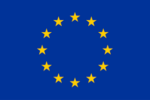Blog posts
Would CAREPATH-intervention be economically efficient? An approach to an Economic analysis using different simulation scenarios
Published on 30 May 2025

Because resources are scarce and budgets are limited, it is necessary to make decisions on how to invest these resources in the most efficient way. It is in this situation where the role played by economic evaluations represents a very important instrument to take decisions about the implementation of certain strategies/policies.
Although at the present time it is not possible to develop an economic evaluation for the CAREPATH-intervention, several plausible scenarios of the economic impact of including the CAREPATH-intervention in the health care basket of the countries participant in the project were developed.
Our estimation shows that the total cost of the implementation of the CAREPATH-intervention would range from 1,010€/annual per patient in the case of Germany to 386€/patient in Rumania. In the case of the UK and Spain, the intervention would be implemented into their health systems to a cost of 954€/patient and 925€/patient, respectively.
Besides, the CAREPATH intervention would be cost-neutral in the different countries participating in the study if the probability of annual hospitalization were reduced by 16% in Spain, 30% in the case of Romania and goes down to around 12% in the cases of Germany and the UK. Likewise, in terms of visits to specialists, the CAREPATH-intervention would need to reduce them by 8 visits so that the intervention could be considered as cost-neutral (29 visits for the case of Romania, 4 and 6 for Germany and the UK, respectively). When we consider the admission in a nursing home, the intervention would need to reduce it by 4% to be considered cost-neutral in Spain, 6%, 2% and 1% for Romania, Germany and the UK, respectively. Finally, when we consider non-healthcare costs, such as nonprofessional caregiving, CAREPATH-intervention would need to be reduced by around 56 caregiving hours (per year) to be considered cost-neutral. This figure rises to 97 caregiving hours in the case of Romania, 27 and 29 hours for Germany and the UK, respectively.
However, far more important than achieving cost neutrality is considering the improved health outcomes the program would represent for patients and their primary caregivers. In this way, the results show that the combination of improvements in Health-related Quality of Life-HRQoL- along with small reductions in resource use (such as a reduction of 5% in hospitalization admission, a reduction of 5 specialist visits, a reduction of 2% in residence admission and a reduction of 2h/w of careering) would make the CAREPATH program a dominant intervention (lower cost and better health outcomes, compared to usual care).
To sum up, taking into account the moderate cost associated with the implementation of the CAREPATH program, and the plausibility of health outcomes carried out in the different simulation scenarios, CAREPATH-intervention would improve the health of patients and their caregivers to a low cost or even saving costs. This suggests that CAREPATH-intervention could be clearly efficient, both from the perspective of the health funder and from the social perspective.
 This project has received funding from the European Union’s
Horizon 2020 research and innovation programme under grant
agreement No 945169
This project has received funding from the European Union’s
Horizon 2020 research and innovation programme under grant
agreement No 945169